Although the life story of Michelangelo Merisi da Caravaggio (1571-1610), better known as simply “Caravaggio,” reads like a thriller, the talent of this Baroque master was undeniable.
He had to flee from both Milan and Rome and painted numerous incredible masterpieces in between his rowdy escapades.
Let’s take a closer look at some of the most interesting facts about The Cardsharps by Caravaggio, one of the Baroque paintings he completed while he was still an aspiring artist.
1. It was painted shortly after he arrived in Rome in the 1590s
Caravaggio was born in Milan but his family moved to the nearby town of Caravaggio where he probably spent his childhood years.
He was apprenticed in Milan as a teenager but had to flee the city in mysterious circumstances. It’s assumed that he badly wounded a police officer during one of his many quarrels, but not much is known about the incident.
He arrived in Rome in 1592 in a very desperate state. He managed to use his talent o survive. he started painting flowers and baskets of fruit during a period when he became very ill.
This illness is noticeable in a self-portrait titled “Young Sick Bacchus,” a work he produced while he was working in the studio of Mannerist artist Giuseppe Cesari.
Other works he painted during this period are “Boy Peeling a Fruit” and “Boy with a Basket of Fruit.”
He completed The Cardsharps a few years later in 1594, a period that he was trying to make a name for himself in Rome as a young artist.
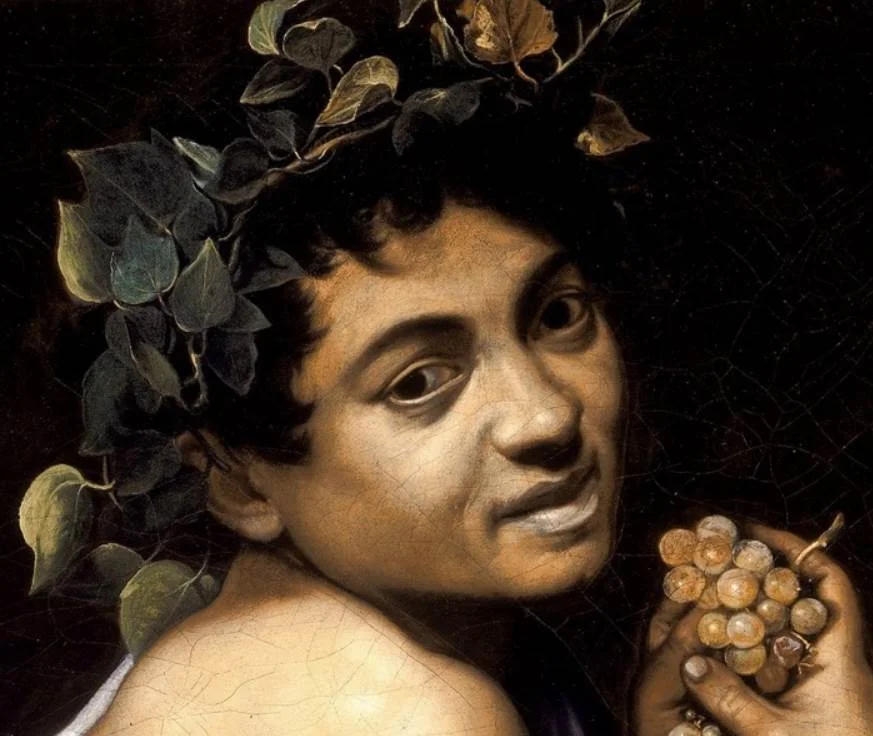
2. It depicts two boys playing cards with one of them being duped

The painting was a very unusual work of art at the time because it depicts an ordinary card game played by young boys.
Both are extremely well-dressed in expensive contemporary clothes. This adds an extra dimension to the painting which must have shocked viewers at the time.
The boy on the right has some cards behind his back and a dubious-looking older man is peeking at the cards of the boy on the left, signaling which cards he is holding.
The realistic setting of the work, the lines on the older man’s forehead, and the expression on the cheating boy’s face are all elements that make this a remarkable work of art.
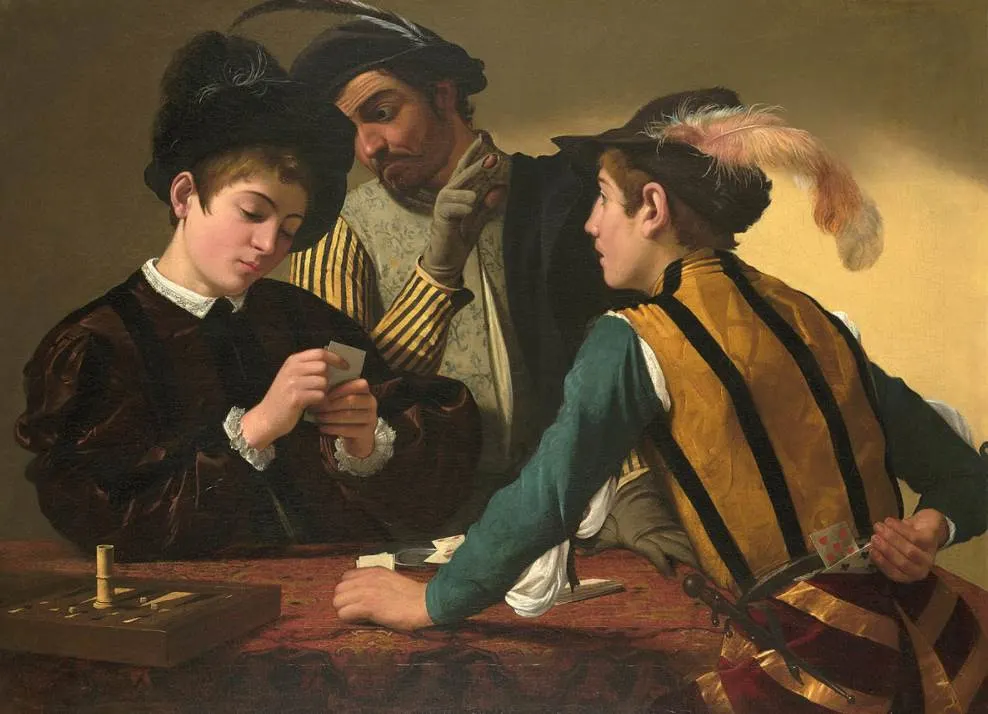
3. The painting was an important work in Caravaggio’s career
The young aspiring artist spent several years in the studio of Cesari and gradually started befriending influential people in Rome.
His friendships with painter Prospero Orsi, architect Onorio Longhi, and Sicilian artist Mario Minniti. Especially Orsi played a crucial role in Caravaggio leaving Cesari’s studio in January 1594.
Through Oris, he managed to get the attention of collector Cardinal Francesco Del Monte. He was even allowed to stay at the Cardinal’s palace called Palazzo Madama in central Rome.
Del Monte purchased the Cardsharps and became the artist’s first major patron, making it a turning point in the struggling artist’s career.
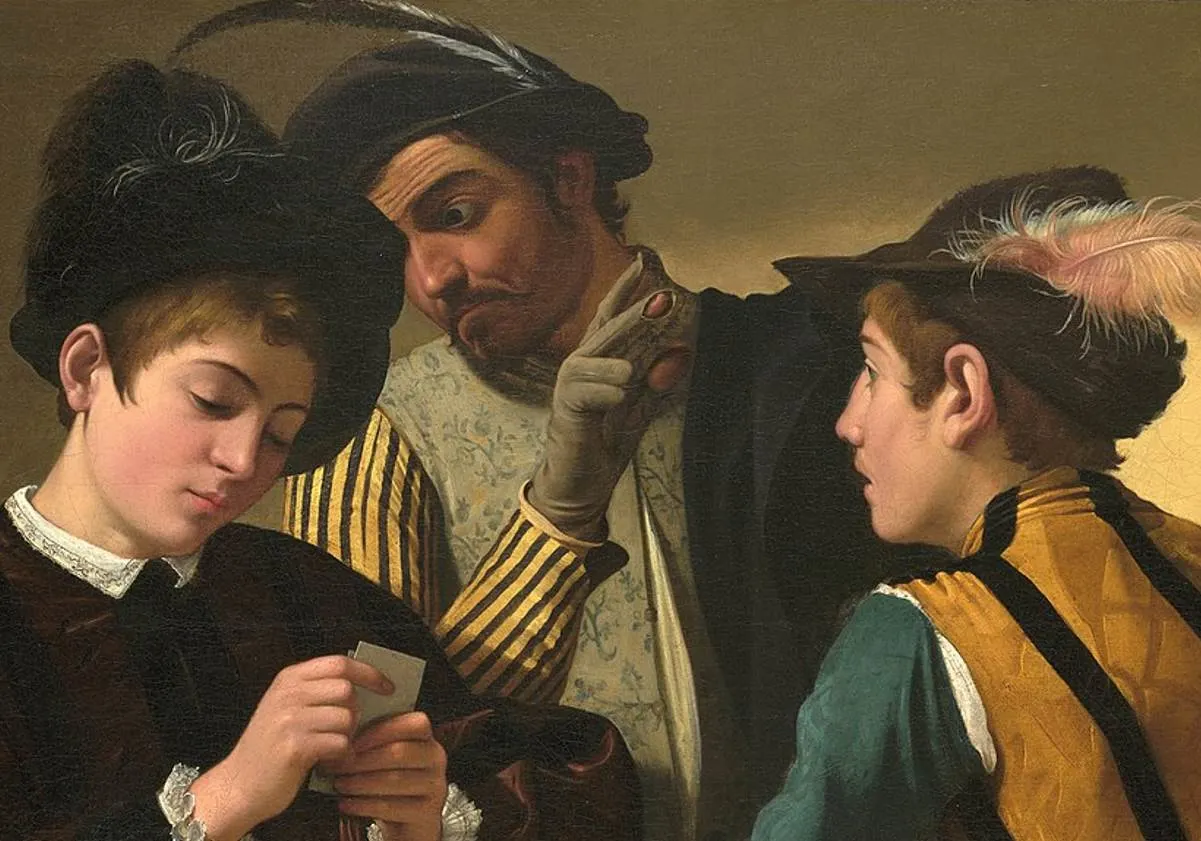
4. It was the second painting in which Caravaggio depicted an ordinary scene
The artist launched his career by selling genre paintings that were quite unusual at the time. He already produced an earlier painting in the year 1594 titled “The Fortune Teller.”
This is another painting that depicts deceit because the smile on the gypsy woman’s face is false as she fools the young boy.
It’s believed that the model for this painting was Caravaggio’s friend Mario Minniti, a 16-year-old artist at the time who probably also modeled for his paintings featuring baskets of fruit.
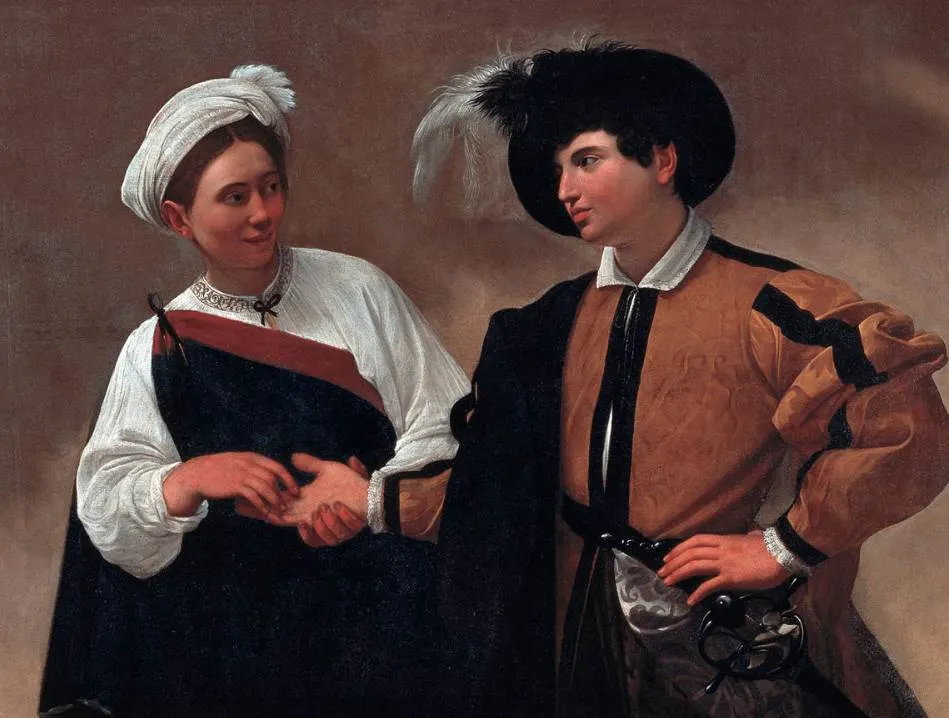
5. The painting was highly influential and was replicated several times
Caravaggio produced two versions of The Fortune Teller which have a similar composition. It’s possible that he painted two versions of the Cardsharps as well although this has been disputed.
The painting was extremely influential nonetheless and dozens of copies and derivative works have been produced by other artists, especially during the first decades of the 17th century.
The troubled artist had a large following and became the most popular painter in Rome around the turn of the century. The tenebrist style that he perfected in works such as “The Calling of Saint Matthew” was widely adopted by artists all across Europe.
Of the more than 50 copies and variants of the painting that have survived, one of the most remarkable is a painting titled “The Card Sharp with the Ace of Diamonds” (1636-1638) by French artist Georges De La Tour.
This painting is part of the collection of the Louvre Museum in Paris.
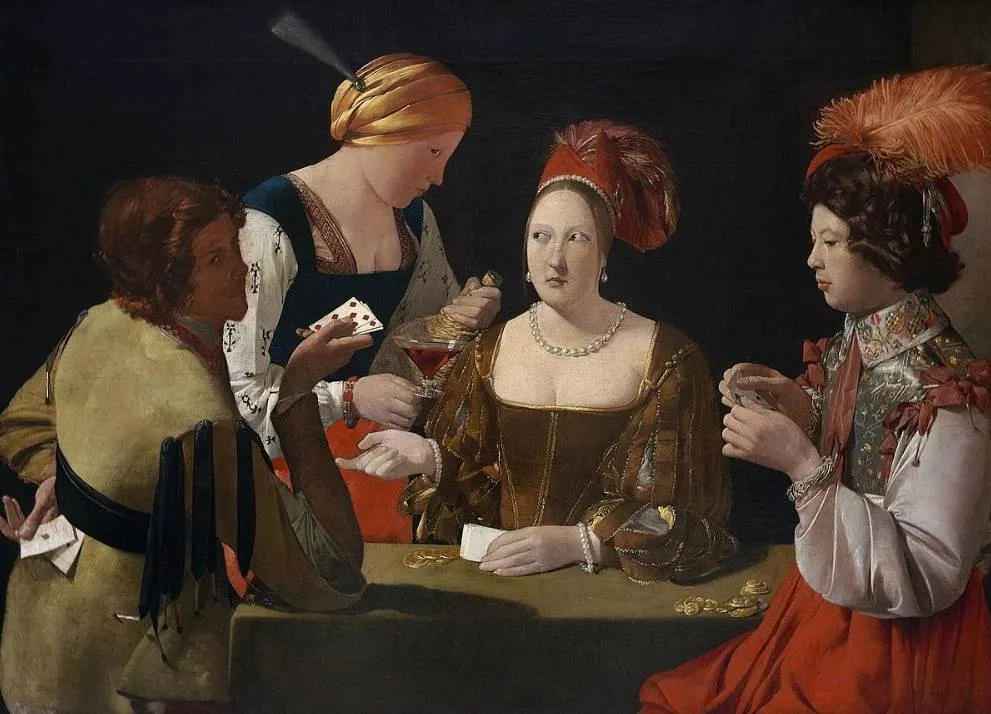
6. The painting went missing for nearly 100 years in the late 19th century
The painting switched hands from Cardinal Francesco Del Monte (1549-1627) to another Cardinal named Antonio Barberini (1607-1671).
It passed through the Colonna-Sciarra family in the following centuries and eventually went missing around 1890.
It wasn’t until the year 1987 that the paint reemerged in a private collection in Zürich, Switzerland.
Needless to say, this was pretty big news at the time as it provided art historians with new insights into the early phase of the famous artist’s career.

7. How big is The Cardsharps by Caravaggio?
The artist didn’t have the time nor the resources to paint huge works of art in the year 1594. After all, he had to sell his paintings to survive.
The Cardsharps by Caravaggio is an oil on canvas painting that has dimensions of 94 × 131 centimeters (37 × 52 inches).
8. Where is the painting located today?
The painting was acquired the same year that it was rediscovered in 1987. It was the Kimbell Art Museum that managed to acquire the masterpiece by Caravaggio in 1987.
This museum is located in Fort Worth, Texas, and was established in 1972 from the private collection of art collectors Kay and Velma Kimbell.
Although the collection size of just 350 paintings is fairly low, it’s home to some amazing paintings by Old Masters.

